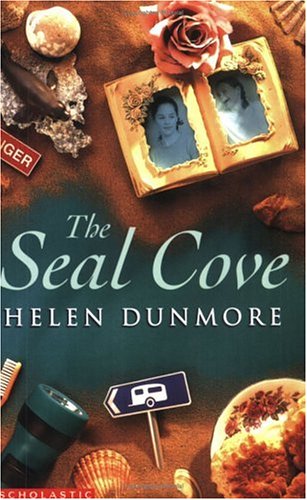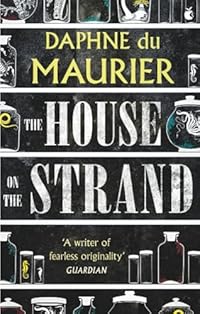I mentioned earlier that I had been reading The Head Girl at the Gables by Angela Brazil. It was one of the books which I bought while we were in Aberdeen recently. I hadn’t read any of Brazil’s books before but as a youngster I devoured Enid Blyton’s Malory Towers books so I thought it would be interesting to compare the two writers.
The Malory Towers books were written for primary school girls I’m sure and I suppose that Angela Brazil was aiming her books at older girls, so it’s maybe an unfair comparison but I have to say that the Brazil books are much better written than Blyton’s. The setting for Head Girl at the Gables is Cornwall, just as for the Malory Towers books.
The book was written in 1919 and the First World War does feature in it with some of the schoolgirl’s brothers away at the front and German spies being thought to be in the area. The Gables is a small private school with around 40 girls in it. It’s owned and run by the two Kingsley sisters, unmarried of course as women teachers had to be in those days.
Their first problem in the new academic year is – who to choose as head girl, there’s no obvious candidate as far as the Misses Kingsley are concerned, but one of the girls takes it for granted that she will be chosen and is very disgurntled when she isn’t.
Porthkeverne is a coastal town, favoured by artists because of its quaintness and presumably its good light. Lorraine and her siblings form friendships with the Castleton children whose father has used them all as models in his popular paintings. It’s all very different from the lifestyle that Lorraine is used to, theirs is a Bohemian life with a young step-mother who had been their father’s model whom he married when his first wife died. She seems to be having a baby a year – poor thing.
There are disappointments which turn out to be for the best, I suppose this type of book was a sort of guide book to life in some ways, but I think they were condemned by some when they were first published as being a bad influence for young girls, which surely contributed to their popularity! So many other writers jumped onto the school story bandwagon but I think these ones were the originals.
Great Minerva! and Great Judkins! are the exclamations of the day. But the real world does break into the storyline with brothers being called up to the army and those aforementioned German spies.
This was better written than I had expected, I must admit that I bought the book because I was drawn to the cover. I do like those Blackie and Son covers.
I know that by complete coincidence another blogger whom I follow was also having her first experience of reading an Angela Brazil book as I was reading this one, but I can’t remember who it was and can’t find the blogpost which is annoying as I wanted to link to it.
Amended: Thanks Barb. It was Leaves and Pages.
 The setting is Cornwall 1920, but the story often slips back to the World War 1 experiences of Daniel and Frederick, and their childhood together. Frederick and his sister Felicia are the children of a man who had made money in Australian mines, as Daniel’s mother had been the cleaner for the family she had become close to their mother, when the mother died Daniel’s mother helped with bringing up the children. But Frederick and Felicia go to private schools, Frederick isn’t interested in learning. It’s Daniel who is the clever one, but he knows he’s never going to be able to stay on at the village school, or have the opportunities that Frederick will have. But they still manage to have a close frienship. When war breaks out they find themselves in the same unit, but of course Frederick is an officer and Daniel isn’t. Only one of them comes back from the war.
The setting is Cornwall 1920, but the story often slips back to the World War 1 experiences of Daniel and Frederick, and their childhood together. Frederick and his sister Felicia are the children of a man who had made money in Australian mines, as Daniel’s mother had been the cleaner for the family she had become close to their mother, when the mother died Daniel’s mother helped with bringing up the children. But Frederick and Felicia go to private schools, Frederick isn’t interested in learning. It’s Daniel who is the clever one, but he knows he’s never going to be able to stay on at the village school, or have the opportunities that Frederick will have. But they still manage to have a close frienship. When war breaks out they find themselves in the same unit, but of course Frederick is an officer and Daniel isn’t. Only one of them comes back from the war.
 The Seal Cove by Helen Dunmore was published in 2001. It’s part of a trilogy, the others are The Lilac Tree and The Silver Bead which I’ve read. I just noticed when I started to read this one that my copy is signed by the author.
The Seal Cove by Helen Dunmore was published in 2001. It’s part of a trilogy, the others are The Lilac Tree and The Silver Bead which I’ve read. I just noticed when I started to read this one that my copy is signed by the author. Zennor in Darkness by Helen Dunmore was published in 1993 and it’s the first book that the author had published. It won the McKitterick prize which is apparently for debut novels by authors over the age of 40. The setting is mainly Spring 1917, in Zennor, a coastal village in Cornwall, close to where D.H. Lawrence has settled with his German wife Frieda.
Zennor in Darkness by Helen Dunmore was published in 1993 and it’s the first book that the author had published. It won the McKitterick prize which is apparently for debut novels by authors over the age of 40. The setting is mainly Spring 1917, in Zennor, a coastal village in Cornwall, close to where D.H. Lawrence has settled with his German wife Frieda.


